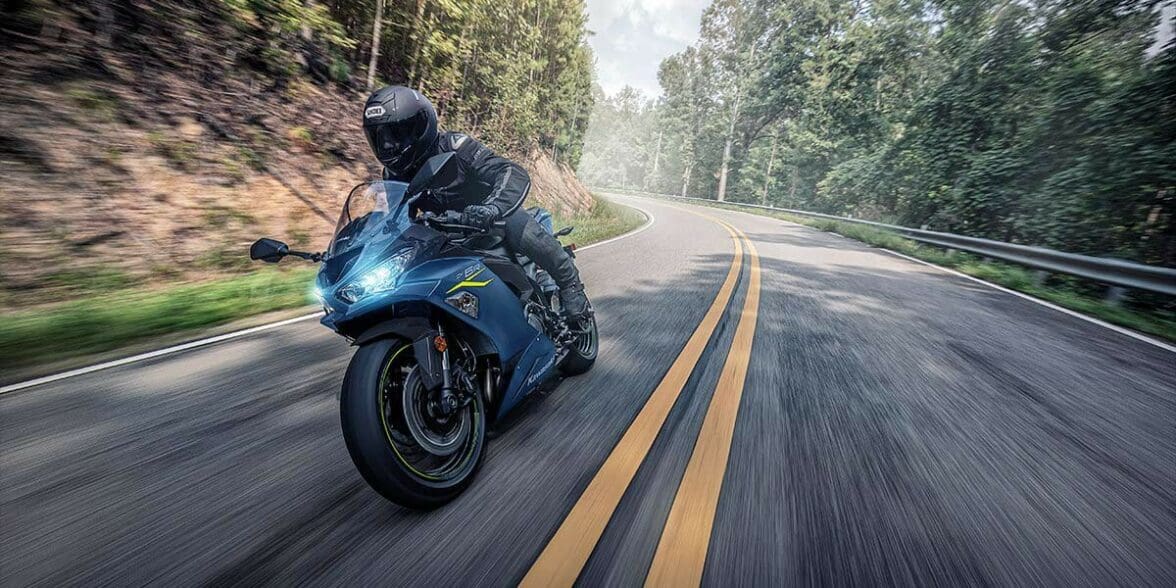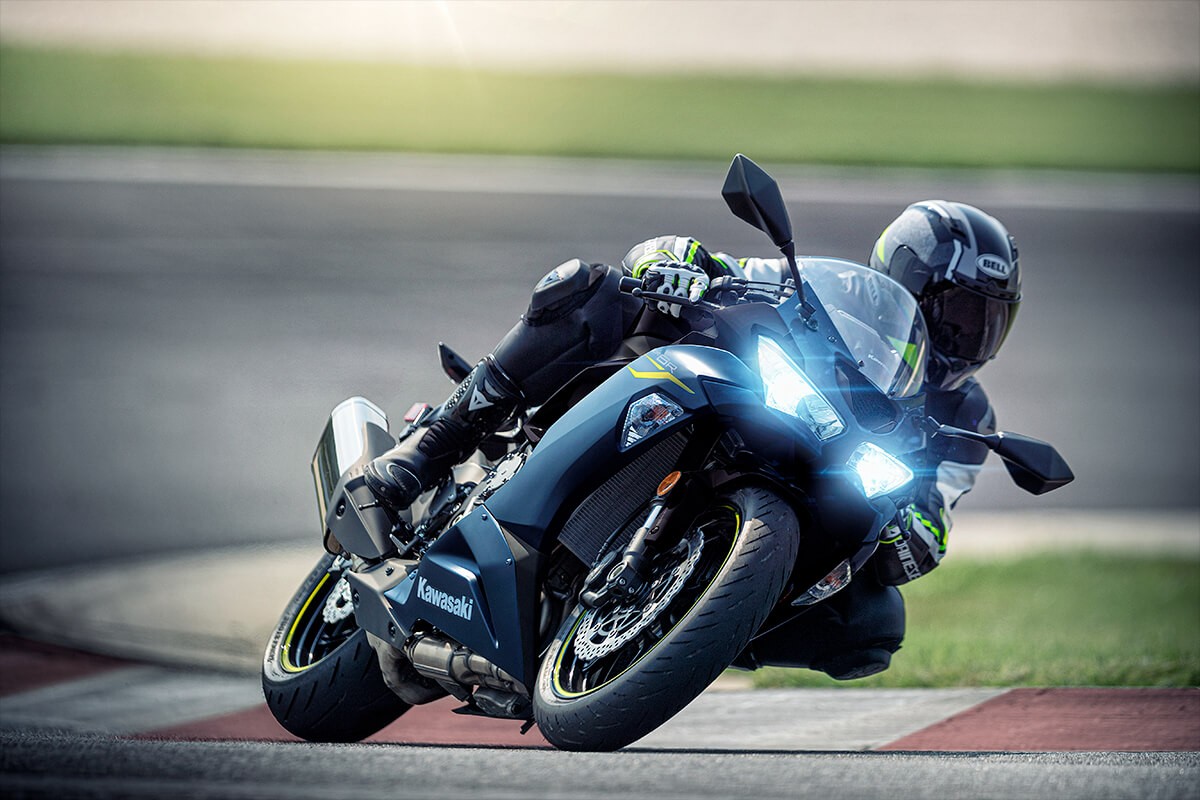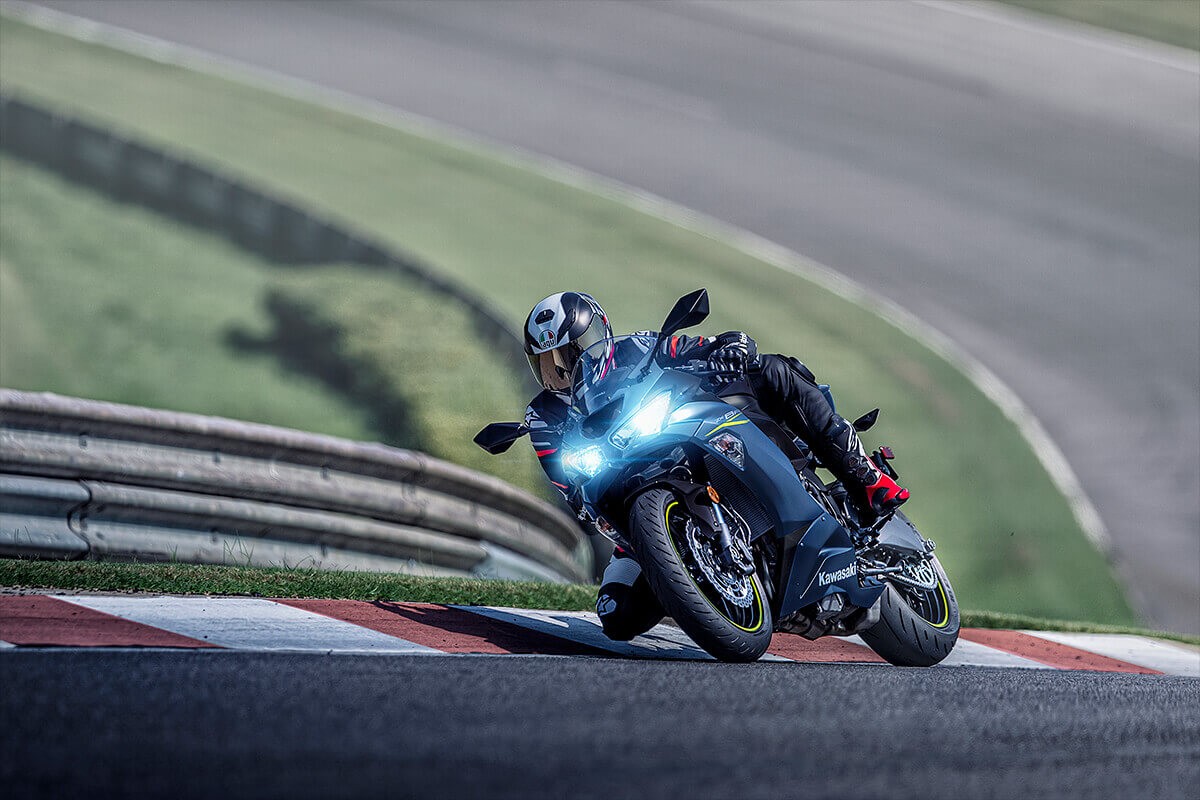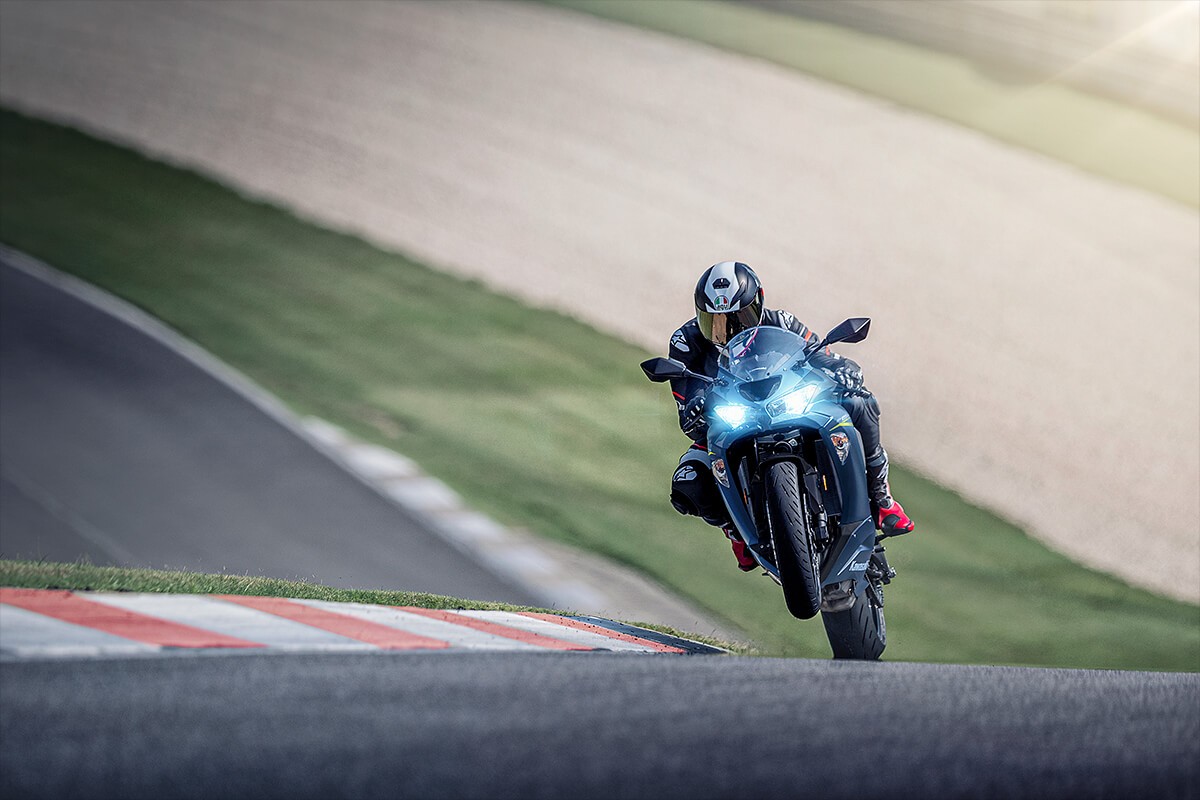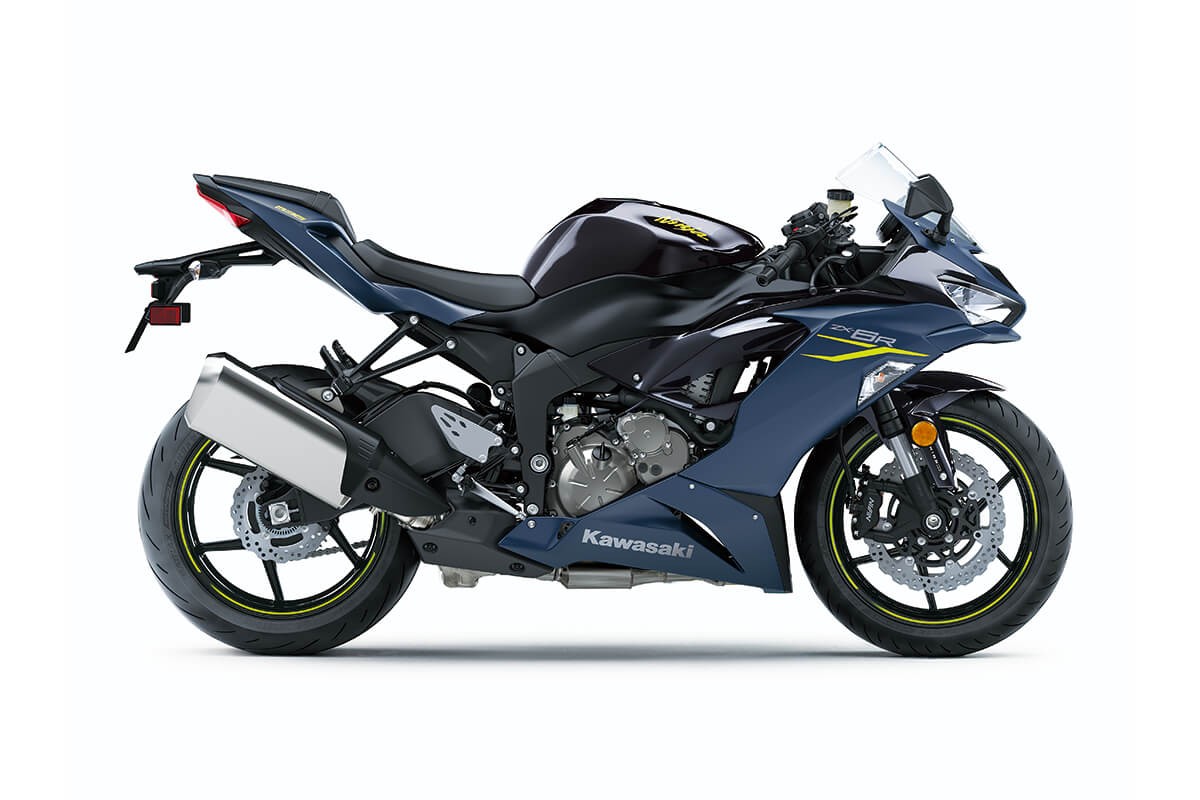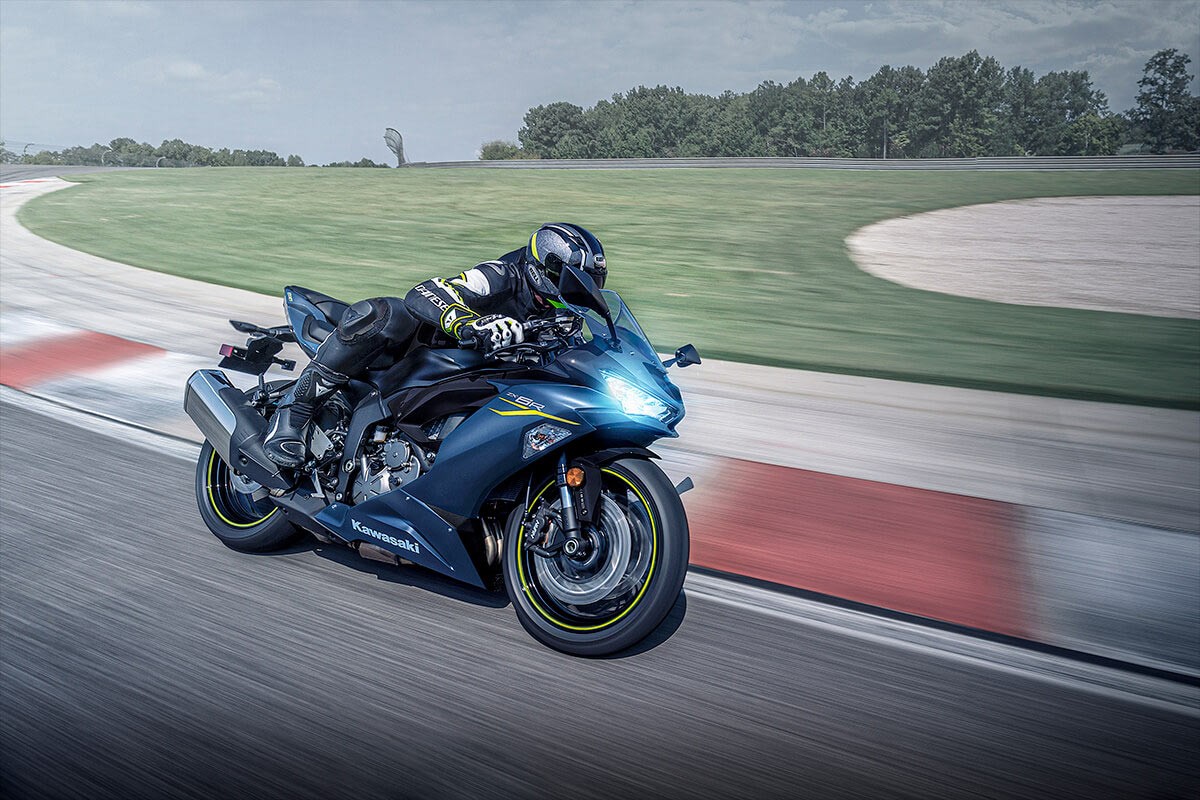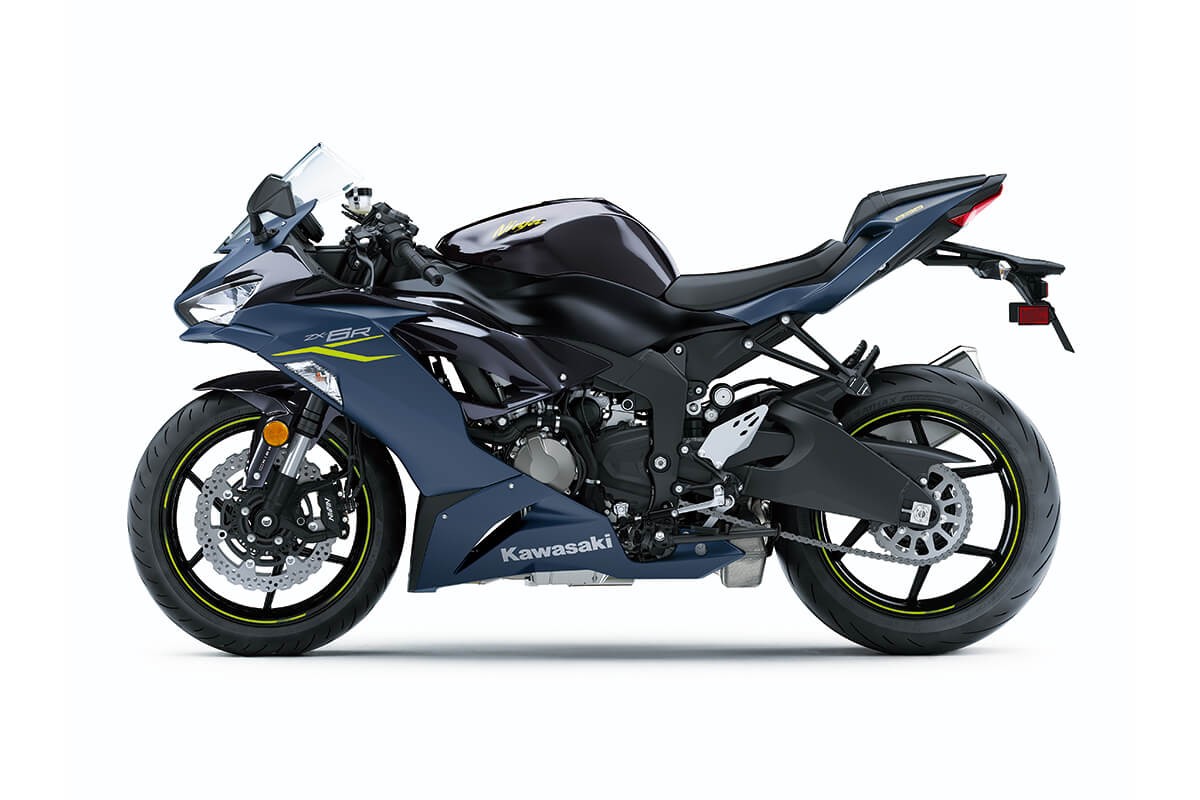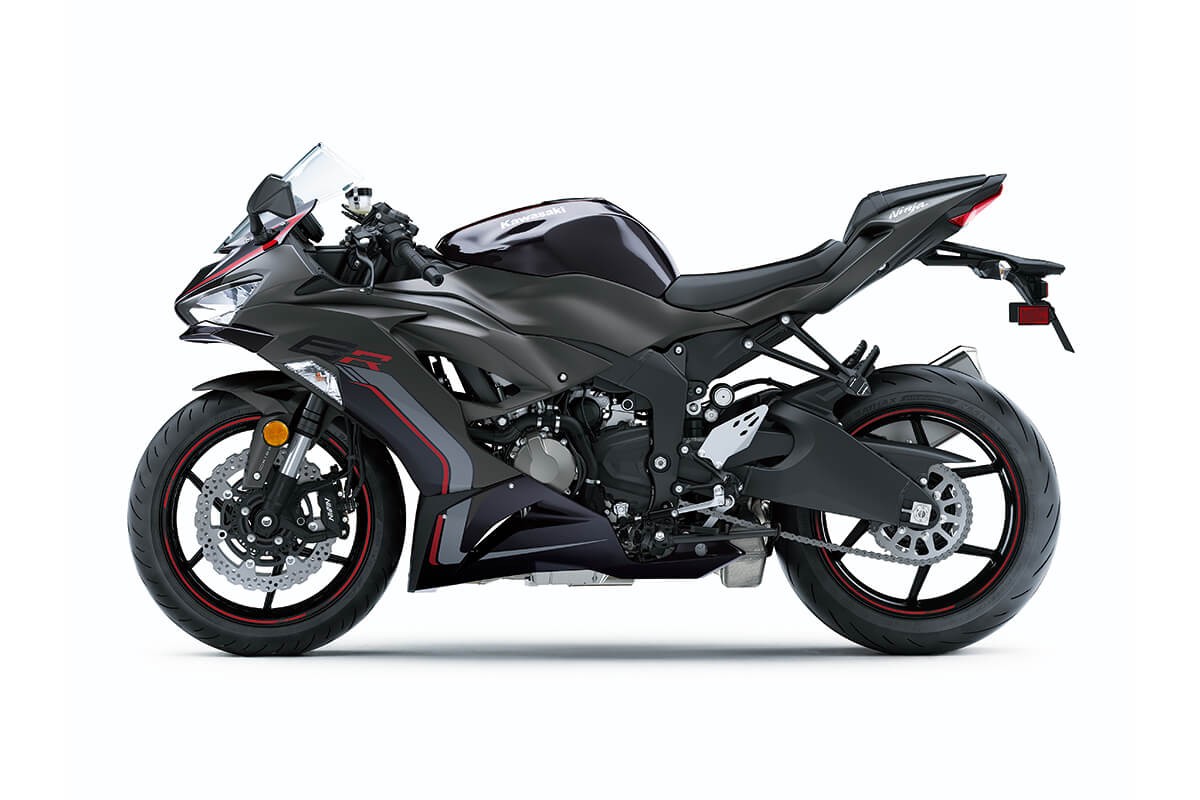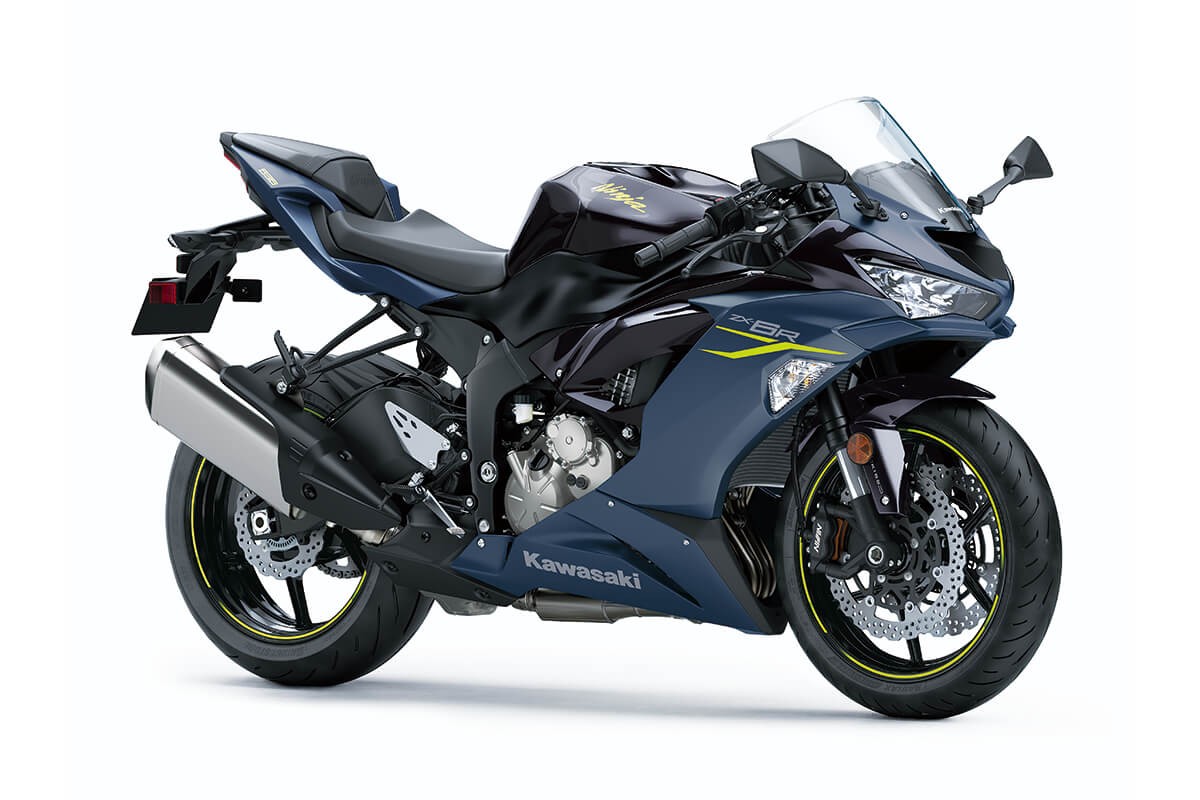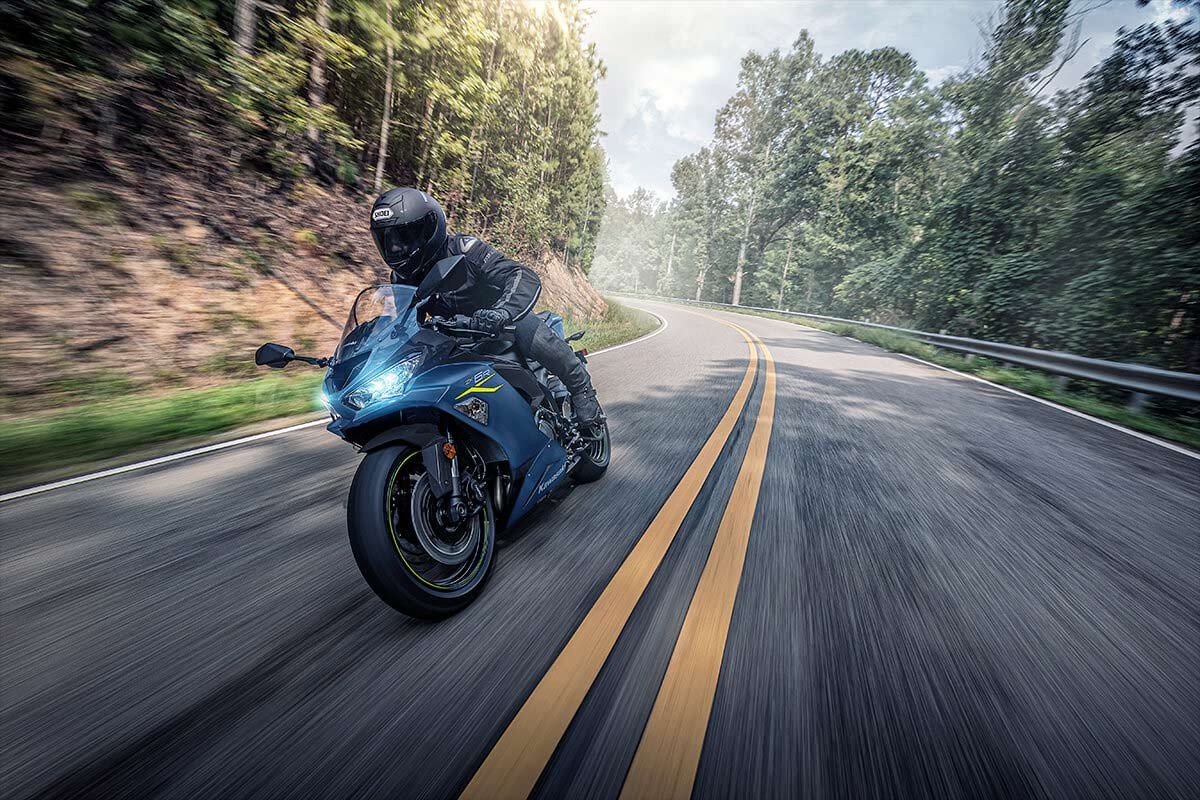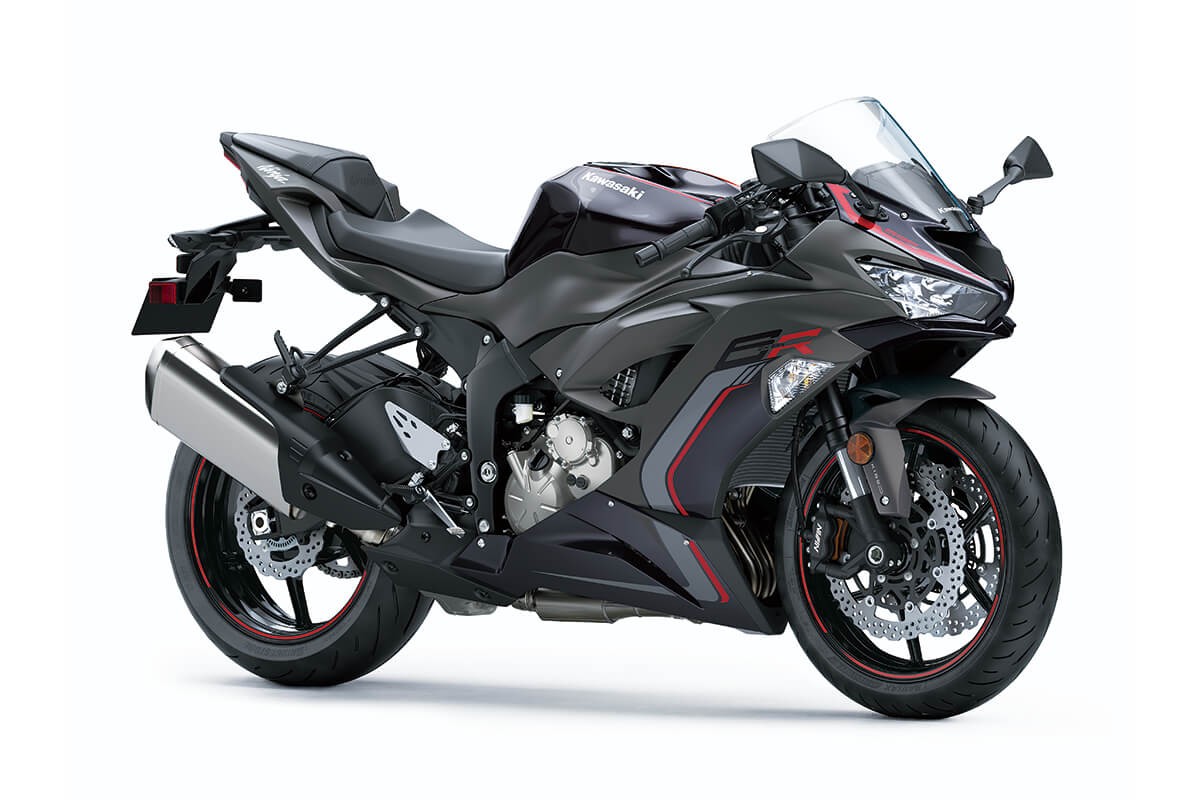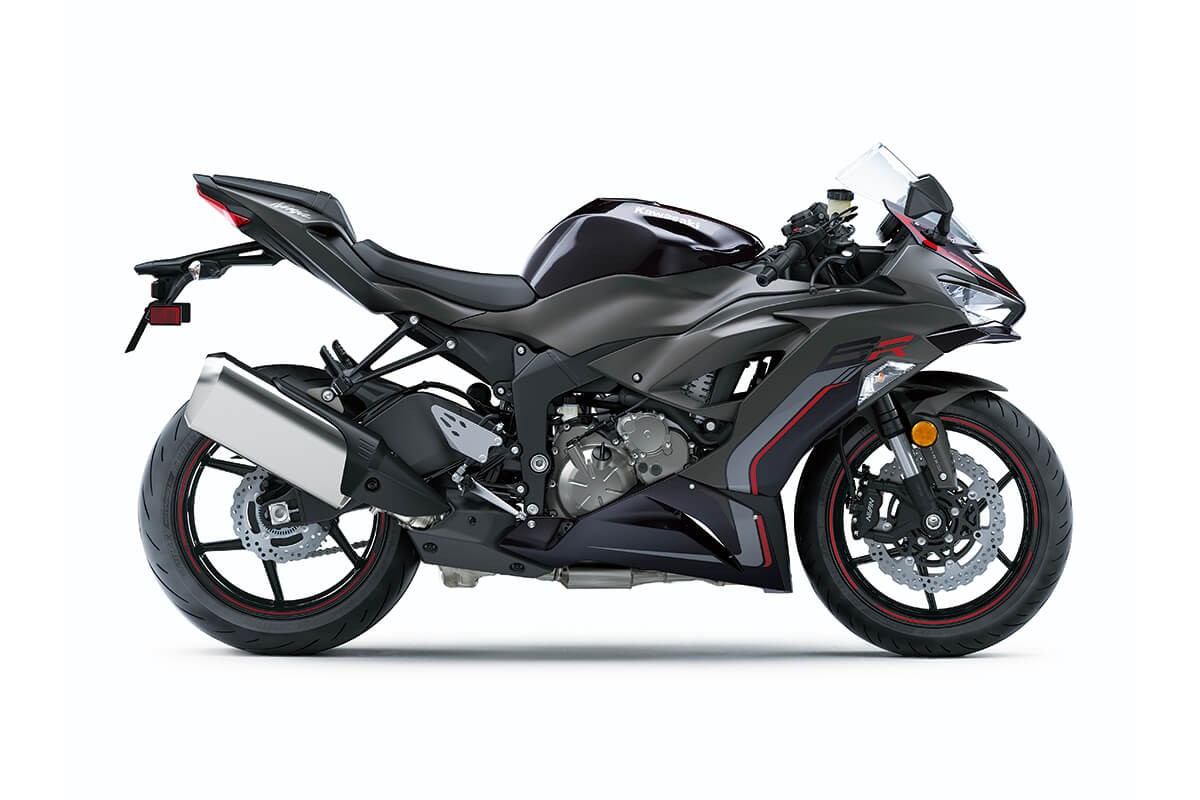2022 Kawasaki Ninja ZX-6R: From the Street to the Track and Back
Contents
Kawasaki has rarely been content to stay in one lane—and the 2022 Ninja ZX-6R stands as a testament to the brand’s versatility. Seemingly designed with the street and the track equally in mind, the newest model of this bike is a mid-size supersport you’ll have fun riding just about anywhere that’s paved.
The ZX-6R gets its considerable power from a 636cc, liquid-cooled, 4-stroke, DOHC 16-valve in-line four engine, producing 134 hp at 13,500 rpm and 52.3 lb-ft of torque at 11,000 rpm. Rider aides include an assist & slipper clutch, economical riding indicator, Kawasaki Traction Control, multiple power modes, ABS, and more.
For 2022, there have been no major changes to the powertrain, but the Ninja ZX-6R does have Bridgestone Battlax Hypersport S22 tires as standard, and the chassis has been subtly redesigned to make it extra sleek. The gear ratio has also been optimized. The bike comes in the following colours: Metallic Matte Graphenesteel Gray/Metallic Diablo Black, with Lime Green/Ebony/Pearl Blizzard White for the KRT version.
Sport riders would be crazy to ignore this gem while looking through Kawasaki’s 2022 motorcycle lineup. If you’re into japanese motorcycles, track monsters, or both, the 2022 Ninja ZX-6R is a bike you can get excited about swinging a leg over.
The 2022 Kawasaki Ninja ZX-6R starts at $10,499 USD / $13,699 CAD.
On this page: we’ve curated specs, features, news, photos/videos, etc. so you can read up on the new 2022 Kawasaki Ninja ZX-6R in one place.
Model Overview
General Info
- Price: $10,499 USD / $13,699 CAD
- Key Features:
- Kawasaki Intelligent anti-lock Brake System (KIBS)
- Kawasaki Traction Control (KTRC)
- Selectable power modes
- Advanced SHOWA SFF-BP fork
- Assist & Slipper Clutch
- Naturally aggressive ergonomics with adjustable clutch lever
- Multi-function LCD screen
- Pressed-aluminum perimeter frame
Main Specs
- Engine: 636cc, liquid-cooled, 4-stroke, DOHC 16-valve in-line four
- Power: 134 hp at 13,500 rpm
- Torque: 52.3 lb-ft of torque at 11,000 rpm
- Curb Weight: 430 lbs (195 kg)
- Seat Height: 32.7 in (830 mm)
Competitors
2022 Kawasaki Ninja ZX-6R Specifications
ENGINE |
||
| Engine | 636cc, 4-stroke, In-Line Four, DOHC, 16-valve, liquid-cooled | |
| Power | 134 hp | |
| Bore x Stroke | 67.0 x 45.1mm | |
| Compression Ratio |
12.9:1
|
|
| Fuel System | DFI® w/38mm Keihin throttle bodies (4) and oval sub-throttles | |
| Starter | Electric | |
| Lubrication | ||
DRIVETRAIN |
||
| Clutch | ||
| Transmission | 6-speed, Manual, Return Shift | |
| Final Drive | Sealed chain | |
CHASSIS |
||
| Suspension Front | 41mm inverted Showa SFF-BP fork with top-out springs, stepless compression and rebound damping, adjustable spring preload/4.7 in | |
| Suspension Rear | Bottom-link Uni-Trak® with gas-charged shock, stepless compression damping adjustment, 25-way adjustable rebound damping, fully adjustable spring preload/5.9 in | |
| Brakes Front | Dual 310mm petal discs with dual radial-mounted, Nissin 4-piston, monobloc calipers | |
| Brakes Rear |
Single 220mm petal discs with single-piston caliper
|
|
| Tires Front | 120/70 ZR17 | |
| Tires Rear | 180/55 ZR17 | |
| Fuel Tank Capacity | 4.5 gal | |
| Color |
Metallic Matte Graphenesteel Gray/Metallic Diablo Black
|
|
ELECTRICAL |
||
| Ignition | TCBI w/Digital Advance | |
| Spark Plugs | ||
| Headlight | LED | |
| Tail Light | LED | |
DIMENSIONS |
||
| Overall Length | 79.7 in. | |
| Overall Width | 28.0 in | |
| Overall Height | 43.3 in. | |
| Wheelbase | 55.1 in. | |
| Ground Clearance | 5.1 in | |
| Seat Height | 32.7 in | |
| Curb Weight | 425.6 lb.* | |
WARRANTY |
||
| Warranty | 12 Months | |
| Kawasaki Protection Plus | 12, 24, or 36 months | |
2022 Kawasaki Ninja ZX-6R Features
Assist & Slipper Clutch
Under normal operation, the assist cam functions as a self-servo mechanism, pulling the clutch hub and operating plate together to compress the clutch plates. This allows the total clutch spring load to be reduced, resulting in a lighter clutch lever feel when operating the clutch.
When excessive engine braking occurs – as a result of quick downshifts (or an accidental downshift) – the slipper cam comes into play, forcing the clutch hub and operating plate apart. This relieves pressure on the clutch plates to reduce back-torque and helps prevent the rear tire from hopping and skidding. This race-style function is particularly useful when sport or track riding.
Dual Throttle Valves
On models with dual throttle valves, there are two throttle valves per cylinder: in addition to the main valves, which are physically linked to the throttle grip and controlled by the rider, a second set of valves, opened and closed by the ECU, precisely regulates intake airflow to ensure a natural, linear response. With the air passing through the throttle bodies becoming smoother, combustion efficiency is improved and power is increased.
Economical Riding Indicator
While effective vehicle speed and engine speed may vary by model, paying attention to conditions that cause the “ECO” mark to appear can help riders improve their fuel efficiency – a handy way to increase cruising range. Further, keeping fuel consumption low also helps minimize negative impact on the environment.
KTRC (Kawasaki Traction Control)
Less intrusive modes maintain optimum traction during cornering. Designed with sport riding in mind, they facilitate acceleration out of corners by maximizing forward drive from the rear wheel. And because Kawasaki’s sophisticated software bases its dynamic analysis on the chassis’ orientation relative to the track surface (rather than relative to a horizontal plane), it is able to take into account corner camber, gradient, etc., and adapt accordingly.
In the more intrusive modes (and for some models, in any mode), when excessive wheel spin is detected, engine output is reduced to allow grip to be regained, effectively enabling riders to negotiate both short, slippery patches (train tracks or manhole covers) and extended stretches of bad roads (wet pavement, cobblestone, gravel) with confidence.
Power Modes
KQS (Kawasaki Quick Shifter)
2022 Kawasaki Ninja ZX-6R Photos
2022 Kawasaki Ninja ZX-6R Videos
2022 Kawasaki Ninja ZX-6R First Ride | REVIEW
2022 Kawasaki Ninja ZX-6R
Links
Kawasaki Official Websites


